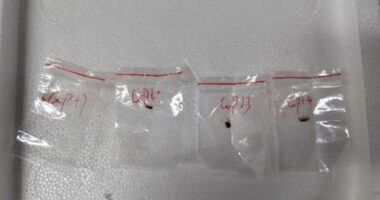Chelsea Bagnall has lived with excruciating pain for almost as long as she can remember.
As a child, she was sick on and off with urinary infections, bouts of vomiting and bowel issues.
Four years ago, when she was 15 years old, Chelsea’s health took a sudden and scary nose dive.
The bouts of vomiting became a daily occurrence and she began experiencing fainting spells. Chelsea’s weight plummeted to 40 kilograms, while her body mass index (BMI) was sitting at just 13.

Things did not change for Chelsea until the family moved to Canberra, where confused doctors confirmed she showed no sign of having an eating disorder and began running gastrointestinal tests.
However, the breakthrough really came last Christmas during a visit to a GP, who had stepped in when Chelsea’s regular doctor was away.
The GP, Emma said, pulled a stethoscope out and listened to Chelsea’s stomach, before commenting that he could not hear any movement.
He ordered a CT angiogram, and while the mother and daughter were initially sceptical, it proved to be the missing link to the puzzle.
The scan showed a compression on Chelsea’s left renal vein, leading to the diagnosis of Superior Mesenteric Artery Syndrome (SMAS).
An ultrasound later showed compressions on Chelsea’s celiac artery as well, a sign pointing to Median Arcuate Ligament Syndrome (MALS).
Further testing has shown three areas needing surgery and Chelsea is set to finally get the help she needs with an operation in May.
Canberra vascular surgeon Gert Frahm-Jensen said vascular compression syndromes, such as MALS and SMAS, were a controversial subject.
“They are considered very rare, although the reality is that they’re probably more common than we think,” Frahm-Jensen, an Associate Professor at the Australian National University’s School of Medicine and Psychology, said.
“What makes it extra tricky is that sometimes patients have scans that show vascular compression but no symptoms, other times they have relatively mild compression but significant symptoms.”
While roughly one fifth of the population had some sort of compression of their celiac artery consistent with MALS, most of these people were not affected by chronic abdominal pain or trouble eating, Frahm-Jensen said.
Adding to the difficulty with diagnosing MALS was the fact that there were many causes of stomach pain which were far more common, including gallbladder or pancreas problems or inflammatory bowel disorders.
“It becomes in many cases a diagnosis of exclusion, meaning you’ve ruled out everything else,” Frahm-Jensen said.
Despite scepticism from some doctors about whether MALS and SMAS were real conditions, about 70 per cent of people who underwent surgery for MALS and SMAS showed an improvement in symptoms afterwards, he said.
Chelsea said she hoped surgery would give her a chance to live a normal life, but the experience of being left to suffer in pain for years by the medical profession had left her scarred.
To those struggling with undiagnosed health problems, Chelsea has a message: “You know your body. You know if something’s wrong. Don’t stop advocating for yourself, no matter how hard it gets, no matter how much you’re dismissed, no matter how much you’re gaslit into believing that you’re fine.
“If you know there is something wrong, fight for it, because you won’t get anywhere unless you do.”









